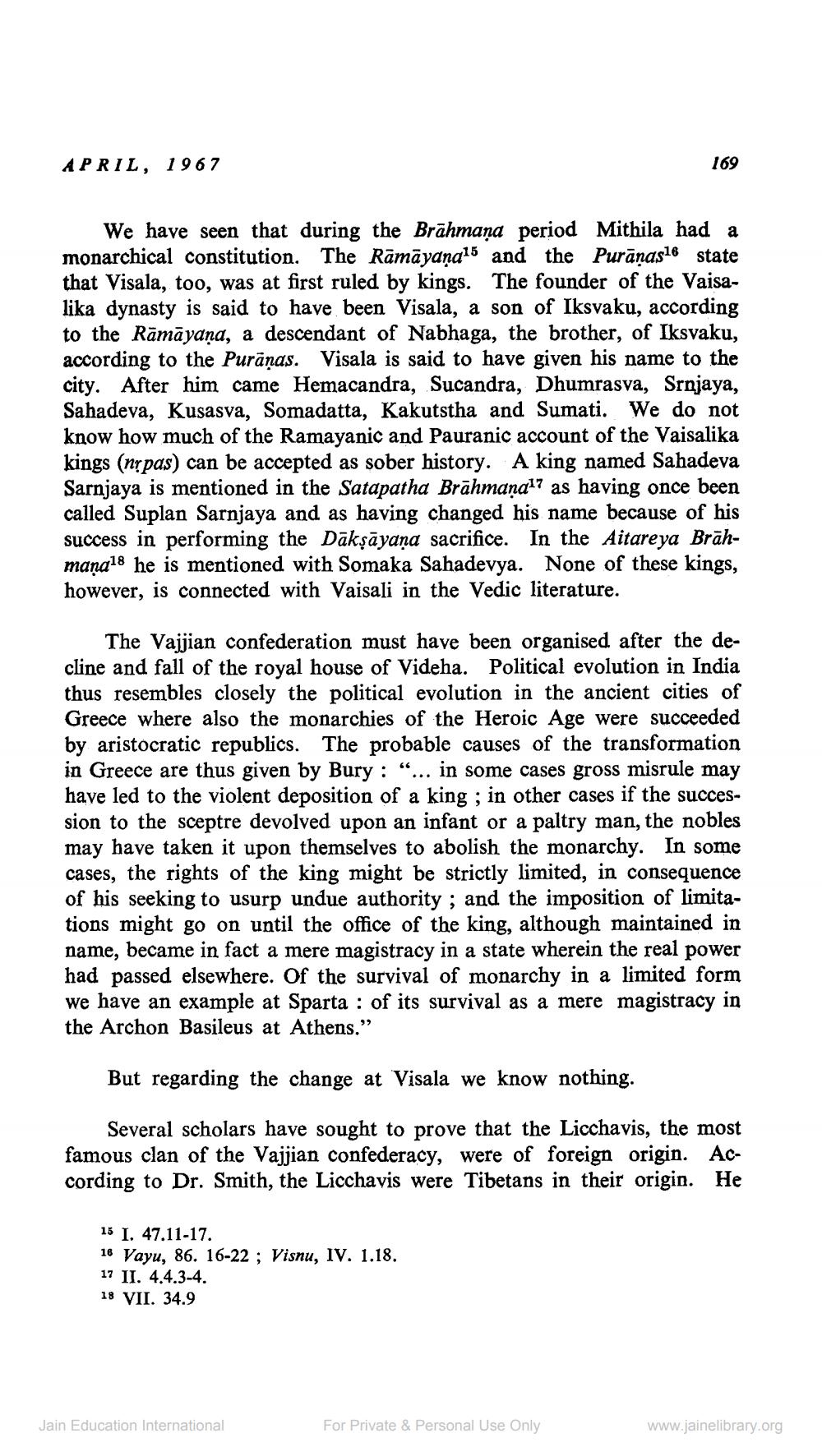________________
APRIL, 1967
169
We have seen that during the Brāhmana period Mithila had a monarchical constitution. The Rāmāyaṇals and the Purānas16 state that Visala, too, was at first ruled by kings. The founder of the Vaisalika dynasty is said to have been Visala, a son of Iksvaku, according to the Rāmāyaṇa, a descendant of Nabhaga, the brother, of Iksvaku, according to the Purānas. Visala is said to have given his name to the city. After him came Hemacandra, Sucandra, Dhumrasva, Srnjaya, Sahadeva, Kusasva, Somadatta, Kakutstha and Sumati. We do not know how much of the Ramayanic and Pauranic account of the Vaisalika kings (nşpas) can be accepted as sober history. A king named Sahadeva Sarnjaya is mentioned in the Satapatha Brāhmanal7 as having once been called Suplan Sarnjaya and as having changed his name because of his success in performing the Dākṣāyaṇa sacrifice. In the Aitareya Brāhmana18 he is mentioned with Somaka Sahadevya. None of these kings, however, is connected with Vaisali in the Vedic literature.
The Vajjian confederation must have been organised after the decline and fall of the royal house of Videha. Political evolution in India thus resembles closely the political evolution in the ancient cities of Greece where also the monarchies of the Heroic Age were succeeded by aristocratic republics. The probable causes of the transformation in Greece are thus given by Bury : "... in some cases gross misrule may have led to the violent deposition of a king ; in other cases if the succession to the sceptre devolved upon an infant or a paltry man, the nobles may have taken it upon themselves to abolish the monarchy. In some cases, the rights of the king might be strictly limited, in consequence of his seeking to usurp undue authority; and the imposition of limitations might go on until the office of the king, although maintained in name, became in fact a mere magistracy in a state wherein the real power had passed elsewhere. Of the survival of monarchy in a limited form we have an example at Sparta : of its survival as a mere magistracy in the Archon Basileus at Athens.”
But regarding the change at Visala we know nothing.
Several scholars have sought to prove that the Licchavis, the most famous clan of the Vajjian confederacy, were of foreign origin. According to Dr. Smith, the Licchavis were Tibetans in their origin. He
15 I. 47.11-17. 16 Vayu, 86. 16-22 ; Visnu, IV. 1.18. 17 II. 4.4.3-4. 18 VII. 34.9
Jain Education International
For Private & Personal Use Only
www.jainelibrary.org




